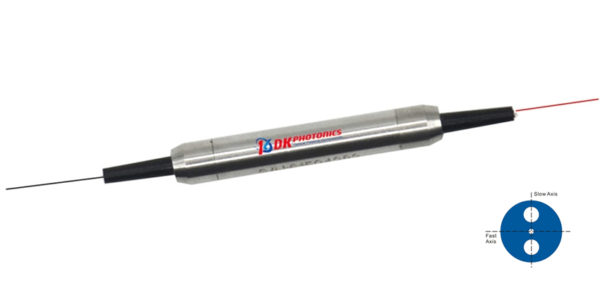Also, known as fiber optic polarizer, an in-line polarizer is indeed a remedy to obtain better quality polarized light for data transmission and light guiding applications. Fiber optic in-line polarizer is ideal to use for medical, networking and military devices because unlike unpolarized light, the polarized light can travel through optical fiber without significant losses and distortions over large distances. Due to their potential use in a vast variety of applications, their demand is increasing rapidly. But before going to a local store or buying an in-line polarizer online, one must know what factors should be considered before making a purchase.

Four Factors That Affect the Performance of In-Line Polarizer
Insertion Loss:
Insertion loss is the most significant factor which decides the quality of light. It refers to the loss of the light signals while traveling in and come out of the optical fiber or you can say a given circuit. The lower value of insertion loss means the higher quality of polarized light. Want to have an idea about the value of insertion loss for in-line polarizer? Alright! The value of insertion loss is usually 0.3 dB (typical) and 0.5 (max.) for 1310 to 1550 nm wavelength and for 1064 nm, it is 0.4 dB (typical) and 0.6 (max.).
Bandwidth:
You will need fiber optic polarizer of different bandwidths for different applications. Thus, according to the application, you need to decide that which optic polarizer and fiber can accommodate the desired bandwidth. While operating wavelength ranges from 630 nm to 2000 nm, the value of bandwidth ranges from ±20 to ±50nm. For your reference, there is a table from which you can determine the bandwidth for your application based on operating wavelength.
| Operating Wavelength (nm) | Bandwidth (nm) |
| 630, 850, 980 | ±20 |
| 1064 | ±40 |
| 1310, 1550 | ±50 |
| 2000 | ±30 |
Size of in-line polarizer:
In most of the applications, small-sized polarizers are preferred as they would need less space and space is usually a constraint in any electronic device. Moreover, smaller polarizers also prompt low insertion loss. Thus, I would also recommend you to use a smaller polarizer; unless and until larger one is a necessity for your application.
Extinction Ratio:
Another prominent factor to choose the best quality in-line fiber optic polarizer for any system is the extinction ratio. It is the ratio of transmission of desired polarization to undesired polarization or we can say that this is the ratio of two optical power levels of the digital signal. It can be expressed in three forms i.e. fraction, dB and percentage.
Poorer values of ER lead to increase in Power Penalty (PP), also worsen Bit-Error-Ratio (BER) and also reduce the benefit of increased power. Thus, you should consider in-line polarizer with high extinction ratio. For lower wavelength, typical ER is 30 and min. ER is 23 while for higher wavelength (>=1030 nm), values should be 28 and 25 respectively. These values are just for having an idea about ER value. ER also varies with SM and PM output. Thus, choose carefully.
By now, I hope, you have gathered the necessary knowledge and facts which you should always consider before buying in-line polarizer.